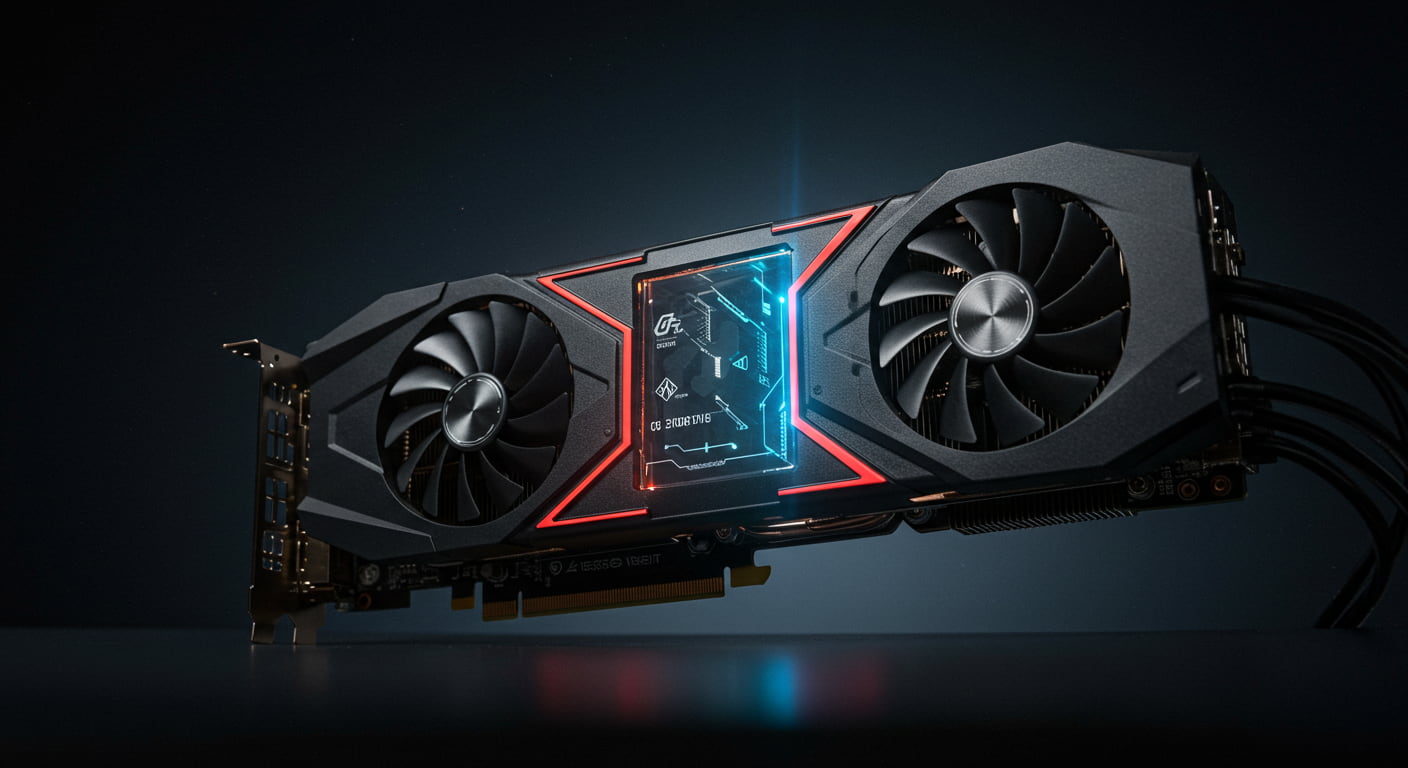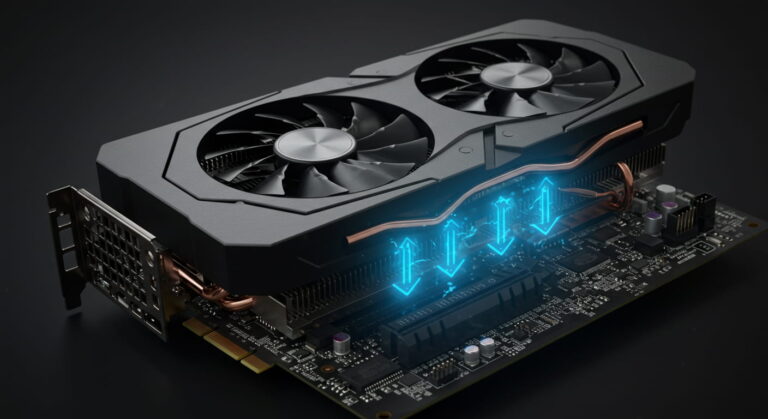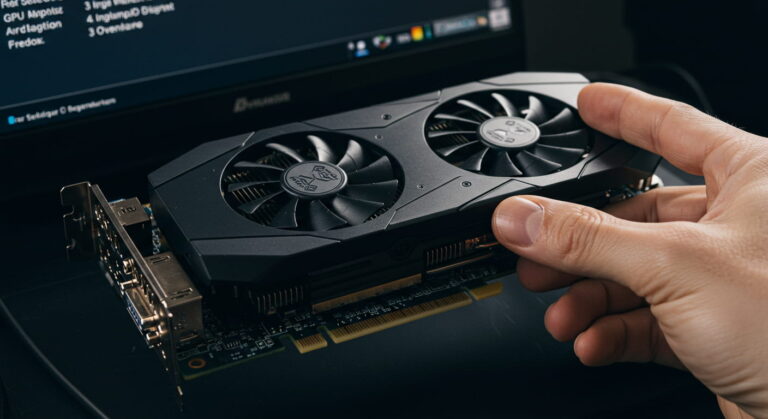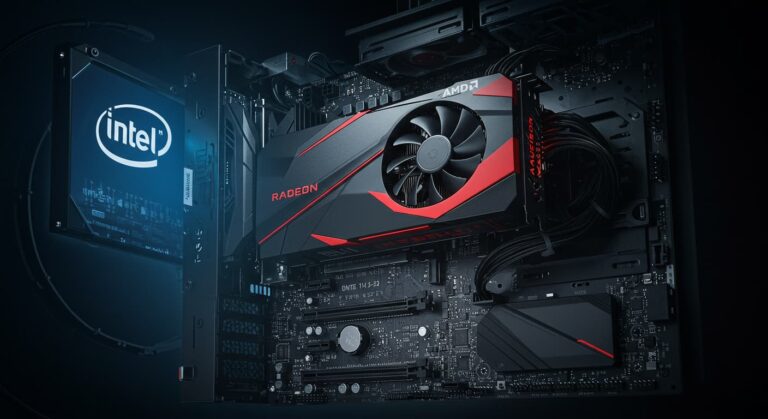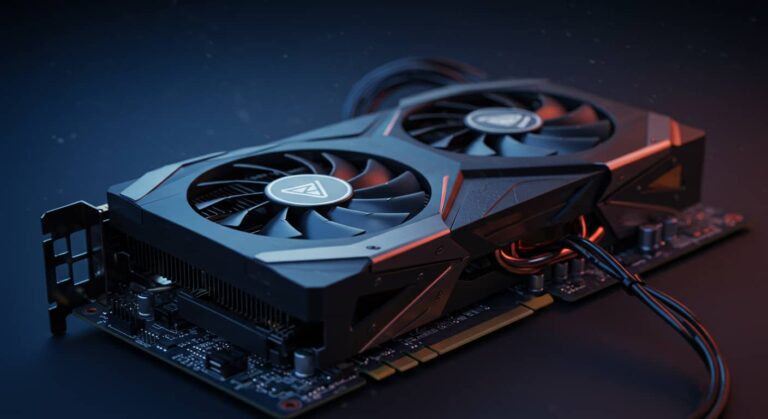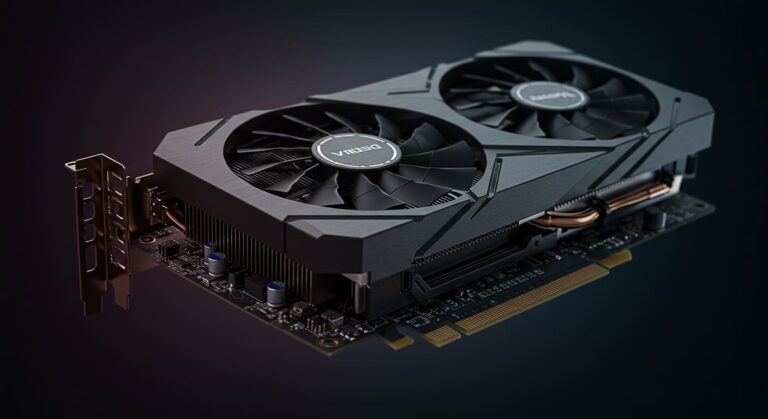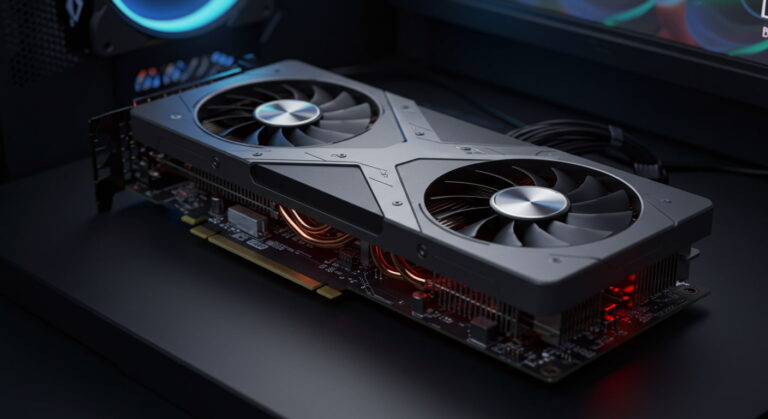GPU Normal Temperature Guide 2025 – Safe Range, Tips & FAQs!
Graphics cards (GPUs) are the backbone of modern gaming and heavy computing. Whether you are playing the latest AAA title, editing 4K videos, or running AI software, your GPU works continuously and generates heat. Many users wonder: What should be the normal GPU temperature? Understanding this not only helps in keeping your hardware safe but also ensures better performance and a longer lifespan.
In this guide, we’ll cover GPU normal temperature ranges, gaming conditions, safe limits, idle temps, and maintenance tips. By the end, you’ll know exactly what temperature your GPU should run at in 2025 for maximum efficiency and safety.
1. What Should Be the Normal GPU Temp While Gaming?
Gaming pushes your GPU to its limits, so temperatures rise significantly. On average, the normal GPU temperature while gaming ranges between 60°C and 85°C depending on the model, workload, and cooling setup.
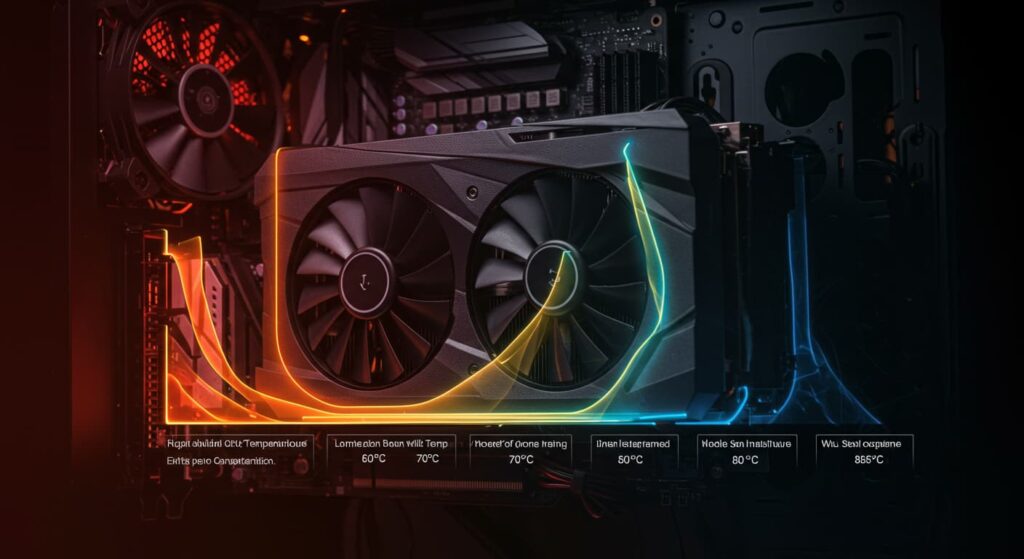
- 60°C – 70°C: Excellent range, safe for long sessions.
- 70°C – 80°C: Normal for high-end gaming GPUs under load.
- 80°C – 85°C: Acceptable but close to upper safe limits.
If your GPU consistently crosses 85°C, it may indicate poor cooling, dust buildup, or insufficient airflow in your case.
2. What is the Normal Temperature of a GPU?
A GPU’s temperature depends on whether it’s idle, gaming, or performing heavy workloads.
- Idle (no load): 30°C – 50°C is normal.
- Light tasks (browsing, streaming): 40°C – 60°C.
- Gaming / rendering: 60°C – 85°C.
- Extreme load (stress tests, mining): 85°C – 90°C.
Manufacturers like NVIDIA and AMD design their GPUs to withstand up to 95°C–105°C, but running them close to that range continuously reduces lifespan.
Also read: GPU Not Showing Up in Device Manager? Causes and Fixes!
3. What are Normal GPU Temps During Gaming?
During gaming, your GPU may face rapid temperature fluctuations. Factors that affect GPU temps include:
- Game type: Competitive eSports games (like CS:GO, Valorant) usually keep GPUs cooler than AAA games (Cyberpunk, GTA V).
- Resolution & settings: Higher resolution and ultra settings put more load, leading to higher temps.
- Cooling system: Better fans, liquid cooling, and airflow significantly reduce GPU temperatures.
So, 65°C – 80°C is considered a normal GPU temperature while gaming in 2025.
4. What’s a Good GPU Normal Temperature?
A good GPU normal temperature means a balance between safe operation and peak performance. Ideally:
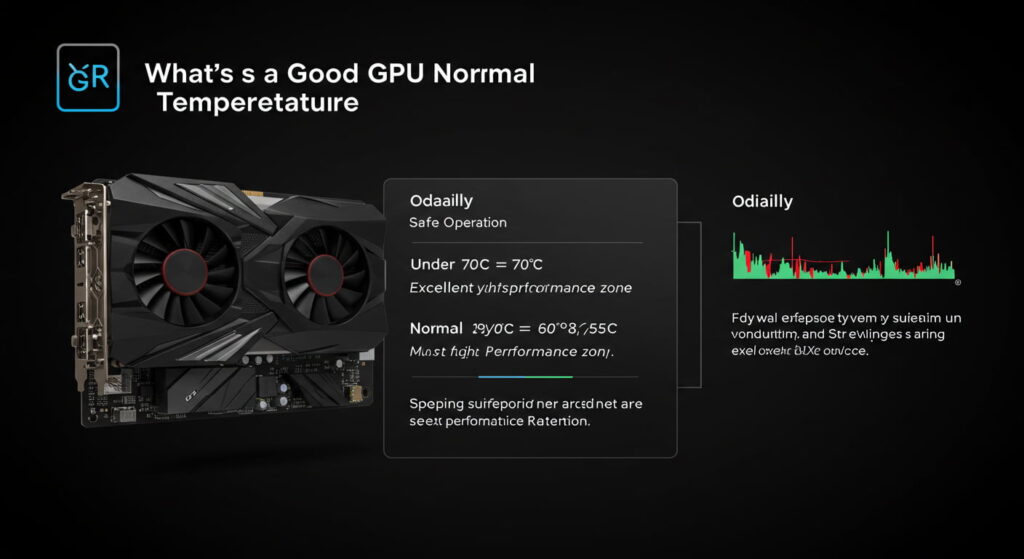
- Under 70°C = Excellent performance zone.
- 70°C – 80°C = Normal for most workloads.
- Above 85°C = Warning zone, needs attention.
Keeping your GPU in the 60–75°C range is the sweet spot for long-term stability.
5. How to Maintain GPU Normal Temperature for Longevity
Maintaining your GPU at a normal temperature is key to extending its lifespan. Here are some effective ways to keep it cool:
- Improve Airflow: Ensure your PC case has proper ventilation with intake and exhaust fans.
- Clean Dust Regularly: Dust buildup on fans and heatsinks reduces cooling efficiency.
- Use Quality Thermal Paste: Reapplying thermal paste every 2–3 years keeps heat transfer optimal.
- Optimize Fan Curves: Tools like MSI Afterburner allow custom fan speeds to control temps better.
- Avoid Overclocking Without Cooling: Overclocking boosts performance but generates extra heat.
- Keep Room Temperature Cool: Ambient temperature directly affects GPU performance.
By following these steps, you can ensure your GPU consistently stays within the safe range, preventing overheating and improving its overall life.
Also read: GPU Serial Number Lookup
6. What Temperature Should My GPU Be?
This question often arises among beginners. A general rule of thumb:
- Keep it under 85°C for gaming.
- Keep it under 75°C for regular tasks.
If your GPU is idling above 50°C, check your cooling setup, as it may signal dust or airflow problems.
7. What’s a Safe GPU Normal Temperature While Gaming?
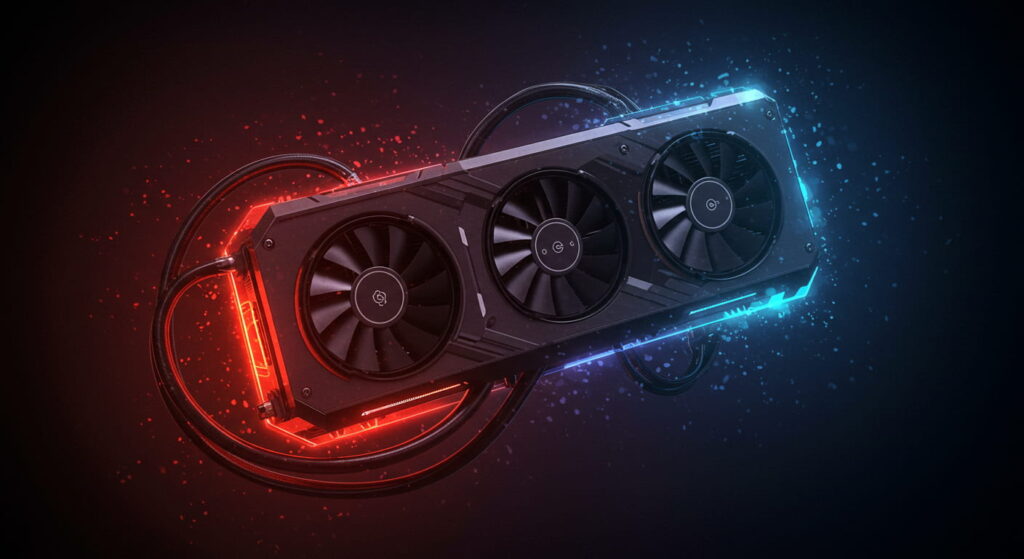
Safe temperature during gaming is usually:
- 60°C – 75°C = Optimal safe range.
- 75°C – 85°C = Still safe, but monitor.
- 85°C+ = Too hot, needs cooling solutions.
Maintaining safe temps prevents throttling, where your GPU reduces performance to cool itself down.
8. Complete Guide to GPU Normal Temperature in 2025
As GPUs become more powerful, heat management is more critical than ever. In 2025, both NVIDIA and AMD GPUs are designed with advanced cooling, but the normal range remains consistent.
- Idle: 30–50°C
- Gaming: 65–80°C
- Rendering / Mining: 70–85°C
- Danger Zone: 90°C+
Future-proofing your PC with good airflow, thermal paste replacement every 2–3 years, and proper monitoring tools ensures that your GPU always stays within safe ranges.
Also read: GPU Safe Temp
9. How Hot is Too Hot? GPU Normal Temperature Guide
So, what’s too hot for a GPU?
- Anything above 90°C is concerning.
- Above 95°C, most GPUs will throttle automatically.
- Crossing 100°C repeatedly risks permanent damage.
Modern GPUs are built with safety cutoffs, but it’s always better to maintain cooling rather than relying on emergency shutdowns.
10. What is the Normal Idle GPU Temperature?
Idle temperature matters because it reflects your system’s cooling efficiency. A normal idle GPU temperature is:
- Desktop GPUs: 30°C – 45°C
- Laptop GPUs: 40°C – 55°C (due to compact size and airflow limits)
If your GPU idles above 55°C, you should check for dust, poor ventilation, or unnecessary background programs.
FAQs About GPU Normal Temperature
Q1. Is 40°C hot for a GPU?
No, 40°C is a very safe and cool temperature, especially for idle or light use.
Q2. Is 60°C bad for GPU gaming?
Not at all. 60°C is excellent while gaming and indicates good cooling.
Q3. Is 80°C hot for GPUs?
80°C is on the higher side but still within safe operating limits for most GPUs.
Q4. Is 48°C good for GPU?
Yes, 48°C is very healthy, especially for idle or light usage.
Q5. Is 150°C hot for a GPU?
Yes, 150°C is far beyond safe limits. A GPU should never reach this temperature.
Q6. Does temperature affect GPU lifespan?
Yes, consistently high temperatures can shorten GPU lifespan by damaging internal components.
Q7. What is the average GPU lifespan with normal temps?
With good cooling and normal temps, GPUs last 5–8 years easily.
Q8. How do I check GPU temperature?
You can use tools like MSI Afterburner, HWMonitor, or built-in NVIDIA/AMD software.
Q9. Do laptops have higher GPU normal temperature than desktops?
Yes, due to limited airflow, laptops often run hotter (70°C–85°C) compared to desktops.
Q10. How can I keep my GPU cool?
\ Improve case airflow, clean dust regularly, use quality thermal paste, and ensure your fans are working properly.
Conclusion:
Knowing the GPU normal temperature is the key to protecting your hardware and keeping it running smoothly. GPUs are designed to handle heat, but consistently high temperatures can reduce performance and shorten lifespan.
To recap:
- Idle: 30–50°C
- Gaming: 60–80°C
- Too Hot: 90°C+
By following proper maintenance steps like improving airflow, cleaning dust, and optimizing cooling, you can maintain your GPU within the normal temperature range. This ensures not just stable gaming performance but also a longer lifespan for your GPU investment.
Related post:
